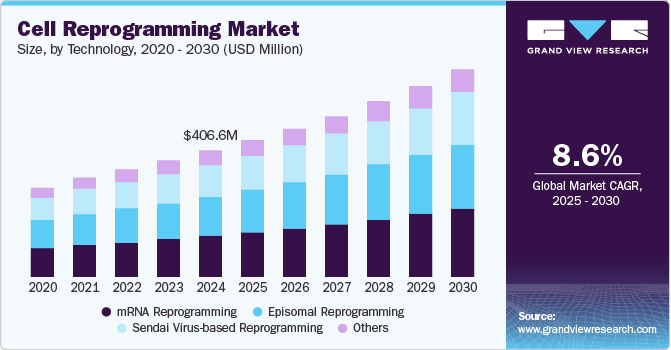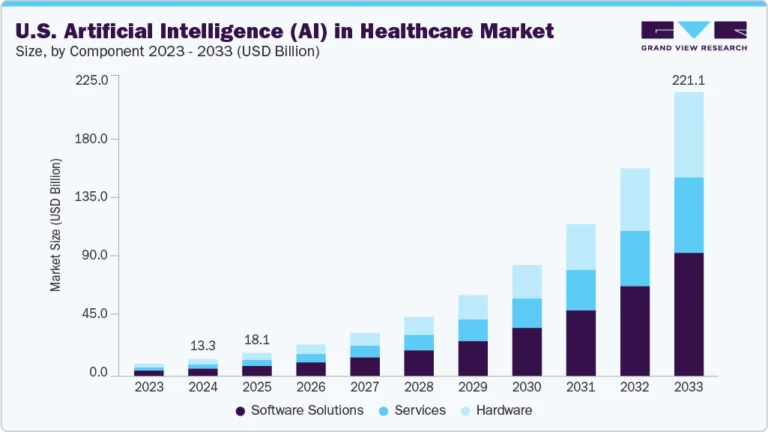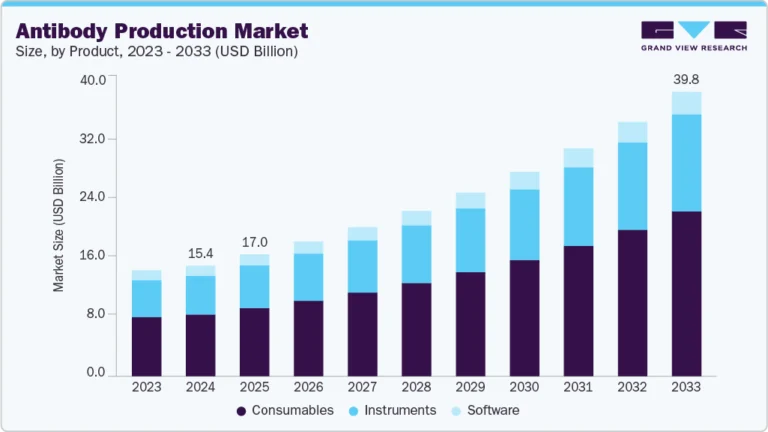Cell Reprogramming Market Size, Share & Trends Analysis growing at a CAGR of 8.55% from 2025 to 2030

The global cell reprogramming market size was estimated at USD 406.6 million in 2024 and is projected to reach USD 664.2 million by 2030, growing at a CAGR of 8.55% from 2025 to 2030. This growth is supported by the rising interest in reprogramming technologies, particularly their role in transforming specialized cells into different cell types.
Key Market Trends & Insights
- In terms of region, North America was the largest revenue generating market in 2024.
- Country-wise, UAE is expected to register the highest CAGR from 2025 to 2030.
- In terms of segment, mRNA reprogramming accounted for a revenue of USD 132.7 million in 2024.
- mRNA Reprogramming is the most lucrative technology segment, registering the fastest growth during the forecast period.
Market Size & Forecast
- 2024 Market Size: USD 406.6 Million
- 2030 Projected Market Size: USD 664.2 Million
- CAGR (2025-2030): 8.55%
- North America: Largest market in 2024
Request a free sample copy or view report summary: https://www.grandviewresearch.com/industry-analysis/cell-reprogramming-market-report/request/rs1
The increased use of these techniques in cancer research drives market activity, along with a growing number of collaborations and partnerships that aim to accelerate research and development in this area.
In January 2023, a collaboration was announced between Automata, a robotics and automation company in the life sciences sector, and bit.bio. This partnership focuses on developing automated systems to support bit. bio’s work in cell reprogramming and precision reprogrammed human cells. Collaborations like this reflect how companies leverage automation and technology to improve the efficiency and scalability of cell reprogramming processes, helping expand their use in research and clinical applications. Such efforts streamline workflows, reduce manual errors, and accelerate the production of consistent, high-quality cell lines. These developments also contribute to reprogrammed cells’ broader use in disease modeling, toxicity testing, and regenerative medicine. With the demand for reproducible and cost-effective solutions growing, strategic collaborations play a key role in shaping the market landscape.
An emerging trend significantly impacting the industry is the integration of gene-editing technologies, particularly CRISPR, with reprogramming methods. The ability to precisely edit genes while reprogramming cells enhances reprogrammed cells’ accuracy and functionality, offering new possibilities in areas such as disease modeling, regenerative medicine, and personalized treatments. In addition, these technologies enable the creation of disease-specific cell lines for research, which is crucial for understanding complex conditions such as cancer and neurodegenerative diseases. With advancements in gene editing continuing to evolve, they are expected to further drive the adoption of cell reprogramming across various biomedical applications, fostering innovation and expanding market potential.
Furthermore, the industry is experiencing significant advancements driven by innovative technologies and substantial investments. For instance, in September 2024, GC Therapeutics launched with USD 75 million in financing to advance its TFome platform, the world’s first “plug-and-play” induced pluripotent stem cell (iPSC) programming system. This platform integrates synthetic biology, gene editing, cell engineering, and machine learning to streamline the development of cell therapies across various therapeutic areas. Such breakthroughs are accelerating the transition of cell reprogramming technologies from research to clinical applications, expanding their potential in regenerative medicine and personalized treatments.






